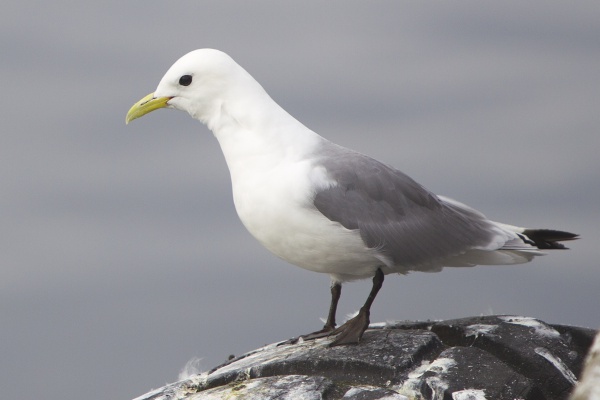Facts About Black-legged kittiwake
The black-legged kittiwake, a seabird belonging to the gull family Laridae, was first described by Carl Linnaeus in 1758. These birds are typically found along the northern coasts of the Atlantic and Pacific Oceans, from arctic to subarctic coastal areas. Kittiwakes are pelagic, meaning they spend most of their lives at sea, coming ashore only during the breeding season to nest on sea cliffs.
Adult kittiwakes are easily recognizable by their white bodies, grey backs, black legs, and yellow bills. Some individuals may even have pinkish-grey legs. They form breeding colonies in North America and Europe, where they generally mate for life, with both parents sharing the responsibility of caring for the young. Their nests are constructed from mud and grass, forming a stable platform with a cup-like center to hold the eggs. Females typically lay between one and three eggs, which incubate for about 27 days. The chicks are born semi-precocial, meaning they are somewhat developed but still reliant on their parents. Unfortunately, siblicide, where the first-born chick kills its sibling, is common. Young kittiwakes reach maturity around four years of age.
Regarding their diet, kittiwakes primarily feed on fish but will consume invertebrates when fish are scarce. They forage on the water's surface and are often observed following whales and fishing boats to scavenge scraps. Kittiwakes are known for their distinctive calls and various other sounds they use for communication.
However, kittiwakes are currently facing serious conservation challenges. Their populations are declining due to factors such as overfishing and global warming, which affect their food supply. Consequently, they are listed as vulnerable on the IUCN Red List.
There are two subspecies of the black-legged kittiwake: R. t. tridactyla in the North Atlantic and R. t. pollicaris in the North Pacific. Conservation efforts are somewhat limited but include monitoring population trends and protection under the Migratory Bird Treaty Act of 1918. Given their sensitivity to environmental changes, additional conservation measures are essential to ensure the survival of these unique seabirds.

 Sweden
Sweden